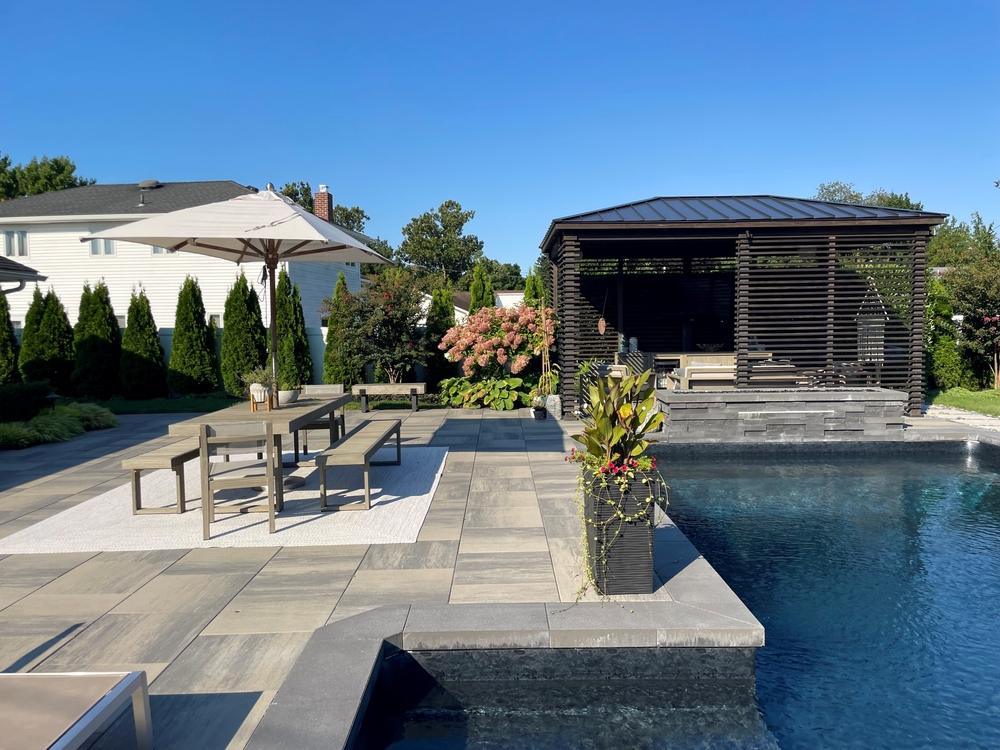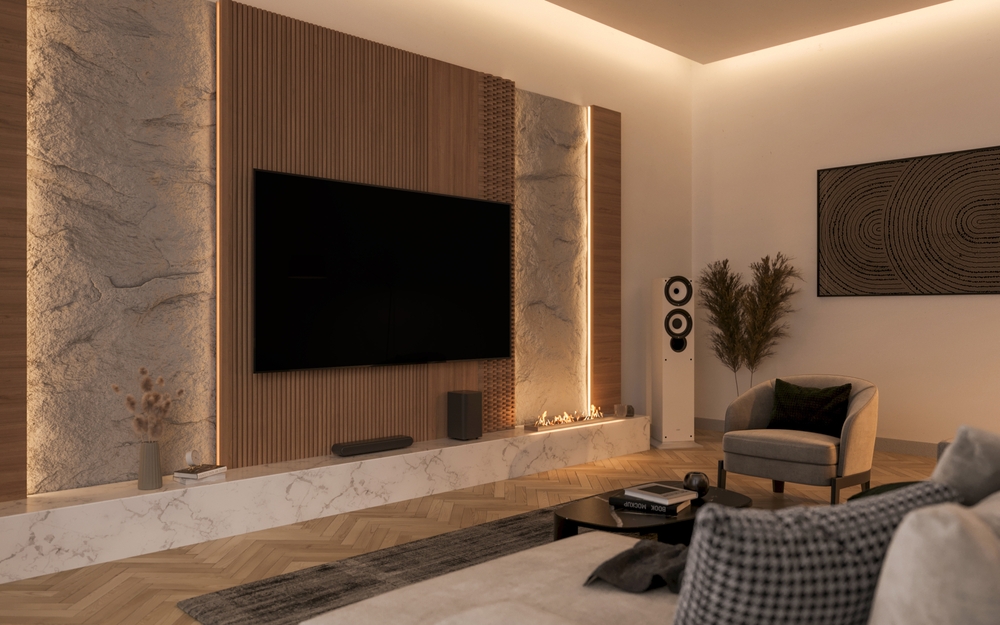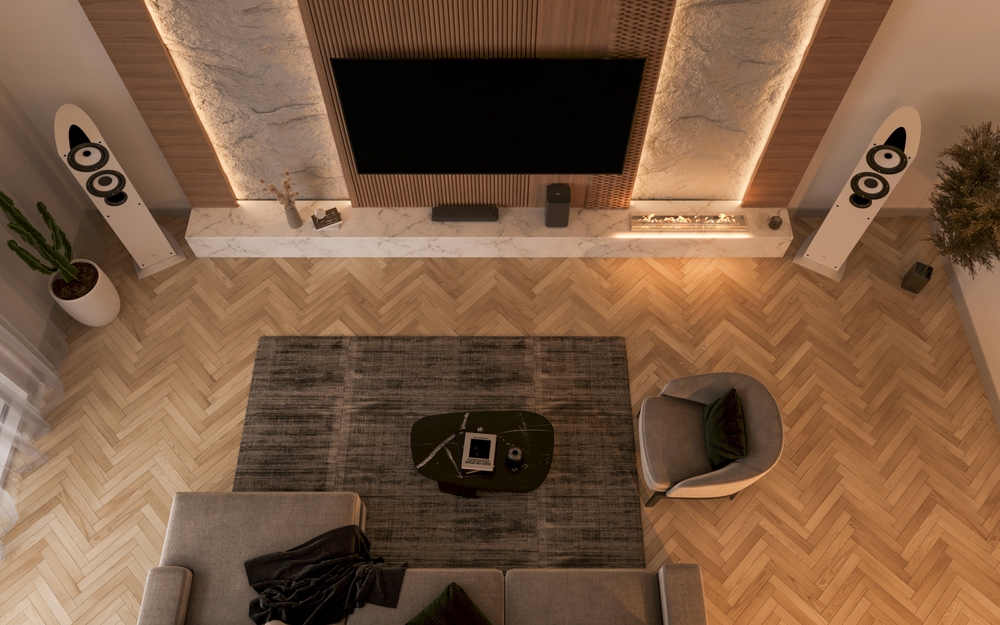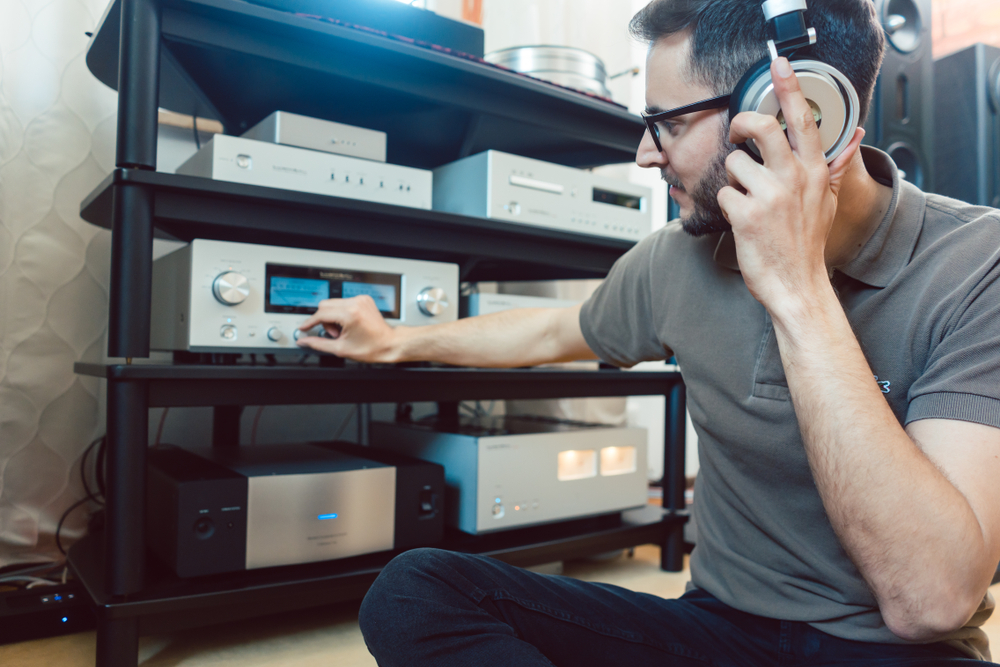
Bringing your favorite music outside no longer requires makeshift setups or portable speakers. With today’s outdoor audio technology, you can enjoy crisp, balanced sound across patios, gardens, and poolsides in Denver, no matter the weather conditions.
These systems are engineered for durability and designed to blend into your space without disrupting the look or layout. If you’re thinking about building a seamless soundscape for the outdoors, this guide will walk you through what to consider and how to get started.
Is weatherproofing important for your outdoor audio system?
Not all audio gear is built for the outdoors. The moment you take your sound system outside, it’s exposed to a host of environmental variables like the sun, rain, dust, humidity, extreme temperatures, and even insects. Without proper weatherproofing, these elements can quickly degrade your equipment and compromise performance.
Weatherproof outdoor audio equipment is specially engineered to survive and thrive in tough conditions. That means sealed enclosures, corrosion-resistant hardware, and waterproof coatings that keep internal components safe.
High-end models go a step further with UV-resistant finishes to prevent sun damage and speaker cones made from materials that resist moisture without distorting sound.
It’s important to distinguish between “weather-resistant” and “weatherproof.” The former may offer limited protection for a covered patio, while the latter is made to endure year-round exposure, even in open gardens or by the pool. When designing your outdoor setup, it’s worth investing in gear that’s rated for permanent outdoor installation, not just occasional use.
How do you build weatherproof outdoor audio systems?
Creating an immersive and long-lasting outdoor audio experience starts with more than just picking a few rugged speakers. A thoughtfully designed system considers layout, power, acoustics, aesthetics, and long-term durability in the face of unpredictable elements.
Unlike indoor setups, outdoor environments lack walls and ceilings to reflect sound, meaning every detail matters when engineering coverage and clarity.
Choosing the right type of speakers
Look for models specifically labeled as weatherproof or outdoor-rated. These are built to withstand rain, humidity, UV rays, and fluctuating temperatures without compromising performance. Common types of outdoor audio systems come with landscape speakers that blend into your garden, surface-mount speakers for patios and gazebos, and in-ground subwoofers to boost bass without drawing attention.
Speaker placement is as important as speaker quality
Instead of blasting music from one central source, distribute multiple speakers across the space to achieve balanced volume. This ensures that guests can enjoy background music without anyone getting overwhelmed by excessive volume at close range. Think about zoning too, as you might want softer sound near a dining area and something more powerful near the pool.
Wiring and power are the next pieces of the puzzle
Wiring and power integration come next. Both wired and wireless outdoor audio systems can deliver excellent performance when designed correctly. Wireless options offer flexibility and easier installation, while wired setups can support larger or more permanent configurations.
Regardless of the approach, it’s essential to ensure strong connectivity, weather-sealed components, and reliable power. Adding surge protection or power conditioning can help prevent damage from fluctuations or outages, especially in outdoor environments.
Control is where the fun really begins
The best outdoor audio systems are integrated into your broader smart home ecosystem. That way, you can manage playlists, volume, or even audio zones with a simple app or voice command. Seamless integration also means you can automate your audio to align with outdoor lighting, weather conditions, or entertaining modes.
Aesthetics and durability go hand-in-hand
High-quality outdoor audio equipment is designed to be both discreet and tough. Many options come in finishes that blend with your landscape or architectural style. It’s worth investing in systems that maintain their appearance and performance over time, saving you from constant maintenance or replacements.
Ultimately, building the right weatherproof audio system is about enhancing the way you live and entertain outside. With expert planning and the right equipment, your yard becomes more than just a space – it transforms into an experience.
What is the go-to provider of outdoor audio in Denver, CO?

Thoughtful audio design elevates every space – indoors and out. At Liaison Technology Group, we specialize in installing durable, high-performance weatherproof sound systems across Denver that withstand the elements without compromising on quality.
Homeowners can enjoy seamless multi-room audio that extends effortlessly into outdoor living areas, creating one cohesive listening experience. Businesses benefit too, with custom solutions that enhance ambiance, encourage customer engagement, and reflect the brand’s identity. No matter the setting, we’re here to help you deliver exceptional sound exactly where it matters!
















